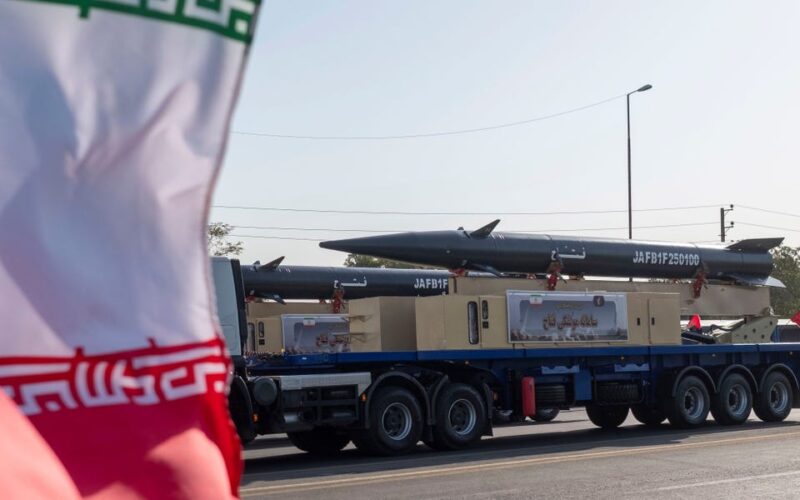- Iran said it fired its new Fattah missile during the attack against Israel on Tuesday.
- The medium-range ballistic missile is one of the most advanced in Iran’s arsenal.
- Tehran claims the missile is hypersonic, but that word is regularly thrown around loosely.
Iran appeared to use one of its most advanced missiles in its massive bombardment of Israel on Tuesday, according to experts and visuals.
The Israeli military said Iran fired more than 180 ballistic missiles at Israel in the barrage, which Tehran said was retaliation for last week’s killing of Hezbollah leader Hassan Nasrallah and the July assassination of Hamas political leader Ismail Haniyeh.
Iran’s Islamic Revolutionary Guard Corps said it launched a variety of missiles in the attack, including the Fattah “hypersonic missile for the first time,” per the IRGC-linked Tasnim news agency.
Business Insider could not independently confirm the IRGC’s claims, but there are indications the missile made an appearance.
AFP via Getty Images
The Fattah-1 is a medium-range ballistic missile considered one of the most advanced in Iran’s arsenal. It was unveiled in June 2023 and can travel nearly 900 miles while carrying a warhead that weighs between 770 and 1,000 pounds. Tehran describes the missile as hypersonic.
Shaan Shaikh, the deputy director of the Missle Defense Project at the Center for Strategic and International Studies, told BI that many long-range ballistic missiles reach hypersonic speeds in their terminal phase. This means they travel at Mach 5 — five times the speed of sound or over 3,800 miles per hour — or faster.
However, true hypersonic capabilities are based on more than just speed and depend on whether the missile can sustain that extreme speed and maneuver effectively during flight. It’s unclear as to whether the Fattah meets all of the criteria, but it does appear to be able to maneuver in flight.
Farzin Nadimi, a senior fellow at The Washington Institute for Near East Policy and an expert in Iranian security and defense affairs, told BI that there are indications that Iran launched a large number of Fattahs in the attack, adding that photographic evidence of fallen debris revealed characteristics consistent with the missile.
Photo by Chen Junqing/Xinhua via Getty Images
Some analysts pointed out online that imagery of missile debris suggests the wreckage could have been from the Fattah or Iran’s Kheibarshekan, another medium-range ballistic missile with similar characteristics, including its booster section. Experts said that both missiles were used in the attack.
Nadimi and Shaikh said they don’t believe Iran used the Fattah during its April attack on Israel, when Tehran fired more than 300 missiles and drones at the country.
Conflict analysts at the Institute for the Study of War said Iran’s Tuesday attack appeared to have been more effective at evading Israeli air defenses than its April bombardment.
In April, Iran launched a much larger barrage overall with around 170 attack drones, 30 cruise missiles, and 120 ballistic missiles. Nearly all of these threats were intercepted.
AP Photo/Ohad Zwigenberg
Tuesday’s attack, however, saw Tehran fire significantly more ballistic missiles and leave out the slower weapon systems this time around, in turn reducing Israel’s warning time as the ballistic missiles took just minutes to arrive.
“It is the number of missiles that are incoming — the saturation effect of the vast quantity attacking certain locations within a limited amount of time — that makes it very hard for defenses to intercept them,” Shaikh said of Tuesday’s attack.
The Israeli military said that a majority of the missiles were intercepted by Israel and a defensive coalition led by the US, including American warships stationed in the Eastern Mediterranean Sea. Still, some of the Iranian missiles managed to impact on land, although they did not appear to cause significant damage.
Source link
lol

